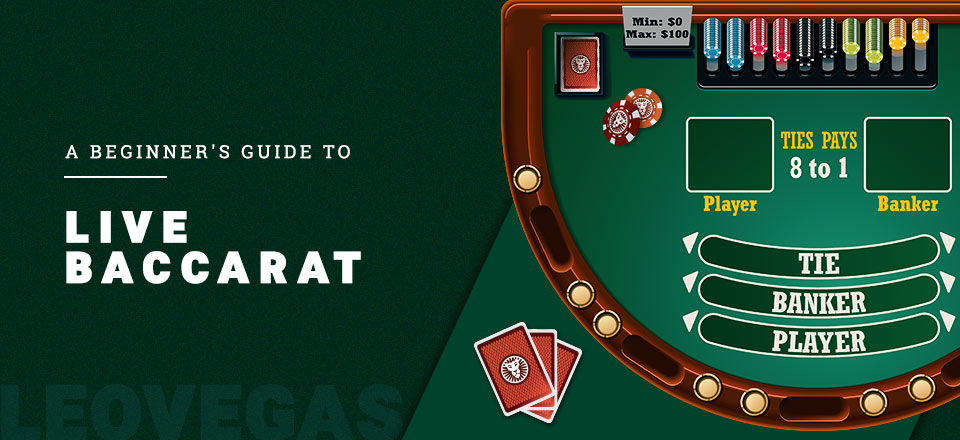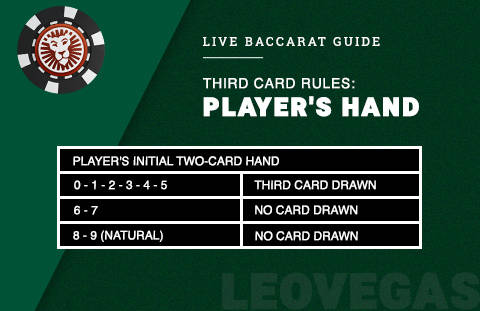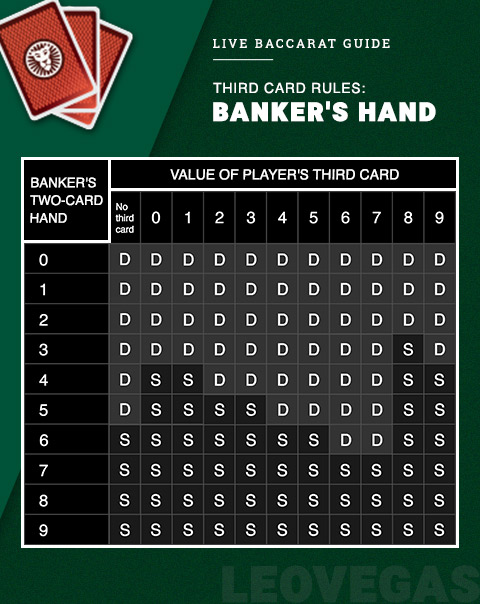
How to Play Baccarat
You might have seen the game of baccarat portrayed in films as a glamorous, high-stakes game that can feel unapproachable.
Yet the version played in casinos is straightforward and accessible. This guide explains the fundamentals of baccarat and highlights different ways to approach the game, both in traditional casinos and online.
What is Baccarat?
Baccarat has been around for centuries, although its precise origins are not well known. While often portrayed in films as sophisticated or exclusive, the actual rules are simple. Unlike poker or blackjack, where players compete directly with the dealer or each other, baccarat is almost entirely a game of chance.
Only two hands are dealt: the “Player” hand and the “Banker” hand. Each round begins with these two hands receiving cards, and participants simply bet on which one they think will win. No decisions are required during play, as all moves are determined by fixed rules.
What is the Objective in Baccarat?
The goal in baccarat is to bet on which side, Player or Banker, will finish with a total closest to 9. Cards from 2 to 9 keep their face value, aces count as 1, and 10s and face cards count as 0. When a total exceeds nine, only the last digit is used.
Two cards are dealt to each side, and the side nearest to nine wins. Winning bets on Player are paid even money, while Banker wins pay slightly less because of a small commission. If both sides tie, Player and Banker bets are returned, and Tie bets are paid at the returns set by the casino.
How to Play Baccarat: Step-by-Step
At first glance, baccarat can seem intimidating, but the gameplay is fast and uncomplicated.
The following steps outline exactly how a round unfolds:
- Before the deal begins, place a wager on Player, Banker, or Tie. Chips are put in the matching betting area. Once the dealer starts dealing, the bet is locked in.
- Four cards are dealt: the first and third go to the Player side, while the second and fourth go to the Banker side.
- The point value of each side is calculated using the game’s scoring system.
- If either side totals 8 or 9, known as a “natural,” no further cards are drawn, and that side wins immediately.
- If no natural occurs, an additional card may be dealt according to the Third Card Rule. The rules are automatic and based only on the totals.
- Once all cards are dealt, the dealer compares the final totals. The side closest to 9 wins. If both sides have the same total, the result is a tie.
- As established, winning bets on Player are paid even money. Winning bets on Banker are also paid even money, but with a small commission deducted.
- Bets on Player or Banker push (the original wager is returned) in the case of a tie, while Tie wagers are settled at the returns offered.
Playing Baccarat Online
Baccarat may have started as an elegant casino floor game, but today, it’s just as accessible in digital form. Online play follows the same rules as the traditional version, while offering added convenience through features like on-screen betting layouts, live dealer tables, multiple game variants, and interactive statistics.
How to Place Bets and Play at a Digital Table
When you sit down at a digital baccarat table, the first step is to choose your bet. Just like in a physical casino, you can bet on the Player hand, the Banker hand, or a Tie. Online platforms make this simple: click on your choice and set your stake. The cards are then dealt automatically, and the outcome appears on your screen.
Working of the Live Feature
Live dealer baccarat streams real dealers and physical cards directly to your device, creating an authentic casino atmosphere at home.
Professional dealers work in dedicated studios with multiple high-definition cameras capturing every angle of the table, cards, dealing process, and studio setting. A chat function allows interaction with dealers and other participants, while the live interface blends the social side of a casino with the convenience of online play.
The streaming technology ensures every card is shown in real time, with no computer-generated results or random number generators used in the gameplay. Live games usually run on fixed schedules, with new hands starting every 30-60 seconds.
Extra features, such as multiple camera views, slow-motion replays of card reveals, detailed game statistics, and interactive scoreboards, provide online play options that are not always available in land-based casinos.
The Potential for Bonus Features
Online baccarat platforms sometimes include extra options and side bets not usually found in traditional casino settings. Common examples are:
- Perfect Pairs: A wager on the first two cards forming matching ranks or suits
- Dragon Bonus: Provides additional returns for winning hands with large point margins
- Lucky Six: Offers special returns when the Banker wins with exactly 6 points
Different Versions of Online Baccarat
Several baccarat variants are commonly found at online venues:
- Punto Banco: The most widely played version, following the rules used in North American and many international casinos. This variant offers the standard three betting options with fixed drawing rules, requiring no decisions other than the initial wager.
- Mini Baccarat: Follows the same rules as Punto Banco but is played on smaller tables with quicker hands and a simpler layout.
- Live Dealer: Brings real-time video of professional dealers working in studio settings, combining the structure of a physical casino with the ease of online access.
- Speed Baccarat: Shortens the usual pace by reducing betting windows and dealing intervals, with hands completed in 20-30 seconds instead of the standard 45-60.
Key Terms to Look Out For
Baccarat uses a few terms that may seem unfamiliar at first, but once understood, they make the game straightforward to follow:
- Punto: The Spanish word for Player, often used in casinos to refer to the Player hand. Dealers may announce “Punto wins” when this side has the higher total.
- Banco: The Spanish word for Banker, used interchangeably with Banker at many tables.
- Tie: Occurs when the Player and Banker hands finish with the same total. Betting on a Tie means predicting that both sides will match. Tie bets return more than standard wagers but are less frequent.
- Natural: A total of 8 or 9 from the first two cards. When this happens, no extra cards are drawn, and the round ends immediately.
- Commission: A fee, usually 5%, collected when the Banker hand wins. This offsets the slight statistical edge of the Banker side.
- Face Cards: Jacks, Queens, and Kings, each valued at zero, the same as a ten.
- Hand Total: The score of a hand after adding card values, with only the last digit of the sum counting. For example, a total of 15 counts as 5, while 20 counts as 0.
- Standoff: Another term for a tie. In this case, Player and Banker bets push, while Tie bets receive their returns.
What is the Third Card Rule? Does it Matter to the Player?
The Third Card Rule in baccarat is a fixed set of conditions that determines whether the Player or Banker hand receives an additional card. The rule applies only after the initial two-card deal and only if neither hand has a natural total of eight or nine.
Based on the totals, one or both hands may receive a third card, which can shift the result of the round. If the Player’s first two cards total between 0 and 5, a third card is drawn automatically. A total of 6 or 7 means the hand stands with no extra card.

For 3 through 6, the decision varies with the Player’s third card. For example, if the Banker has 3, a card is drawn unless the Player’s third card was an 8. With 5, a card is drawn only if the Player’s third card was 4, 5, 6, or 7.

Strategy & Approach to Baccarat
Since the outcome in baccarat is governed by chance and fixed rules, the focus shifts away from skill and toward how the game is approached. Below are strategies and different approaches to baccarat that help shape play into something consistent and controlled.
Bankroll Management
One of the most important steps before playing baccarat is setting a clear bankroll. This is the amount decided in advance that can be risked during play. Once that limit is set, it should be respected regardless of the outcome at the table. This maintains control and prevents chasing losses.
A steady approach is to divide the bankroll into smaller portions assigned to individual sessions rather than using it all at once. For example, if an amount is set aside for the week, it can be split into separate budgets for each day of play. This avoids running through funds too quickly and creates a natural stopping point when results do not meet expectations.
Making Use of Safer Gambling Tools
Another critical aspect of a responsible approach is utilizing the safer gambling tools provided by LeoVegas. The Responsible Gaming page emphasises that play should remain safe, and the tools available to do so.
Among the tools available are:
- Self-Assessment: An anonymous check-in on gambling habits
- Deposit, Loss, Session, and Wagering Limits: Settings that restrict spending or session time
- Player History: A record of wagers, results, deposits, and withdrawals
- Time Alerts: Notifications that track play length and balance changes
- Pause Account: Temporarily close an account for a chosen period
Understand the Odds & House Edge
As established earlier, baccarat revolves around three betting options: Player, Banker, and Tie. The Banker hand holds a small statistical edge, which is why a commission applies to its returns.
The Player hand remains a reasonable option, though without the same advantage. The Tie bet delivers the highest returns but is much less frequent, making it the riskiest choice over time.
While these odds do not change the outcome of a hand, they influence the decisions made before the deal begins.
Read more about baccarat in our guides: